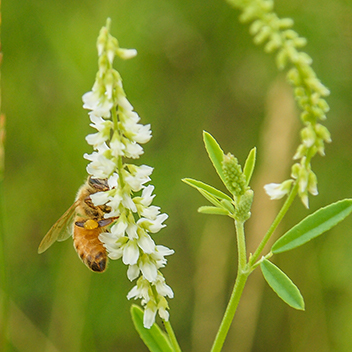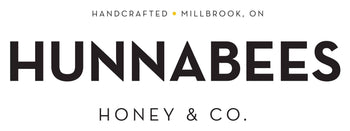Pollinator friendly planting

BY DAVE & KERI NICOLAOU
POLLINATOR
FRIENDLY
PLANTS
OUR QUICK & EASY LIST OF POLLINATOR FRIENDLY FAVOURITES TO ADD TO YOUR GARDEN

Are you wondering what you can do to help out bees and other pollinators? Knowing what to plant is the first step! Creating a garden that attracts pollinators is a great way to improve and support local ecosystems. Pollinators include many different types of bees, butterflies, birds, bats, and even beetles!

WHEN PLANNING YOUR GARDEN, THE GOAL IS TO CREATE AN ENVIRONMENT THAT IS CONSISTENTLY PROVIDING RESOURCES TO THE POLLINATORS. DIFFERENT PLANTS BLOOM AT VARYING TIME PERIODS THROUGHOUT THE YEAR, INCLUDING MICRO-PERIODS SUCH AS EARLY SPRING, LATE SPRING, EARLY SUMMER, FALL, ETC. DEPENDING ON THE WEATHER, BLOOM PERIODS CAN ALSO BE EFFECTED! WITH THAT BEING SAID, ITS SUPER IMPORTANT TO HAVE FLOWERS THAT BLOOM STARTING IN THE SPRING. SPRING IS THE THE START OF THE SEASON, AND RESOURCES ARE GENERALLY SCARCE. THIS IS WHY UNDERSTANDING BLOOM PERIODS CAN BE VITAL TO SUCCESSFULLY SUPPORT POLLINATORS.
OFTENTIMES AUGUST FLOWERS GET ALL OF THE ATTENTION FOR CUT-FLOWERS, HOWEVER, DON'T FORGET THE EARLY SEASON BEAUTY!
Remember, every flower matters. Don't feel discouraged if you only have a small garden! Every little bit of space is super important. Having less lawn is a great way to support your flower habit. With the extra gardens, they require less upkeep compared to mowing the lawn, and its way more eco-friendly.
Here's a few of our favoUrite easy to grow flowers!
1. LAVENDER
Lavender is a farm favourite around here! A perennial, which will come back year after year, although not native, many pollinator species enjoy it around the farm. We like lavender because it blooms twice in a season. Nice and early in June when bee forage is more scarce; and again around September when nectar is also scarce! For the girls, summer blooms tend to be plenty but early and late season they struggle to find resources. If you have the patience for it, grow lavender!! The bees will love you for it!


2. SUNFLOWER
Who doesn’t LOVE sunflowers? There are so many varieties, they brighten up the end of our summer and are so friendly to pollinators. Sunflowers are large enough that honeybees and native bees alike can access the nectar + pollen, and the birds love the seed as well. Sunflowers do come in pollen-less options, which you need to look out for.
3. MILKWEED
Milkweed is most known for being beneficial to monarchs (milkweed is the sole host for monarch caterpillars), however bee species love it as well! To the right you can see a reddish hue on the milkweed plant. Honeybees tend to prefers plants with other colors (as they cannot see red), but hummingbirds especially love the red hues. What a versatile plant!


4. HONEYWORT
Honeywort became one of Beekeeper K's favourites last summer! The bumblebees seemed to especially love it's endless bell-shaped blooms. With striking, blue/purple foliage and its large, bushy shape, its a great space filler for any garden!
5. ECHINACEA
Here is one of our favourite native perennials. Requires a bit more patience or an early start for first year blooms, but these perennials get better and better each year!


6. RUDBECKIA
Also known as black-eyed susan, these are part of the sunflower family and are perennials. We've seen these come back in our wildflower meadows year after year, and pollinators are attracted to it's bright yellow petals and large cone center!
7. SALVIA
Salvia/sage, part of the mint family, is the largest genus within the plant family. We have so many species and colours on the farm that the honeybees especially go wild for. There are nearly 1000 species of salvia, ranging from shrubs, perennials and annuals.


8. VIPERS BUGLOSS
From the borage family (our family), this plant is often mistaken as a weed and can spread quickly like other borage species. But the bees love it and it blooms for a good chunk of the summer!
9. COREOPSIS
What is not to love about lance-leaf coreopsis? Perennial, native to North America, drought tolerant, AND loves poor soil. The yellow petals are so striking and it self seeds and can spread year after year!


10. LICORICE MINT
Otherwise known as hyssop, our bushes absolutely buzz all summer long with bumbles, bees and butterflies. A long blooming perennial, also from the mint family, can be harvested for tea. The leaves are so fragrant!
11. PHACELIA
Phacelia (or purple tansy), is another borage relative. A perennial, phacelia helps reduce weed load and nitrogen leaching from soils. It is a good source of pollen and nectar for pollinators.


12. CORNFLOWER
Cornflowers are just the cutest, tiniest things! Otherwise known as bachelors button, these can be direct seeded in the spring time for lots of short, beautiful blooms. Long bloomers, once established, these can self seed and spread year after year!
13. HONEYSUCKLE
A hardy, low maintenance shrub, draws an abundance of wildlife in with its bright yellow blooms! Drought tolerant and easy going in poor soil. Train these vines along a fenceline or a trellis for a beautiful hedgerow!


14. ASTER & GOLDENROD
OK, these are amazing. You tend to see goldenrod and aster growing wild in untouched fields or ditches. Both are late summer blooms, rich in pollen and nectar for pollinators. And heck, they look so great TOGETHER too!
15. CLOVER
Clover is a favourite of ours because there are so many types that are quite common. Red or white clover, sweet clover and crimson clover, all good cover crop, keep blooming, meaning pollen + nectar available, all season long!

STAY TUNED FOR PT 2 OF OUR FAVOURITE POLLINATOR FRIENDLY PLANTS!


Leave a comment